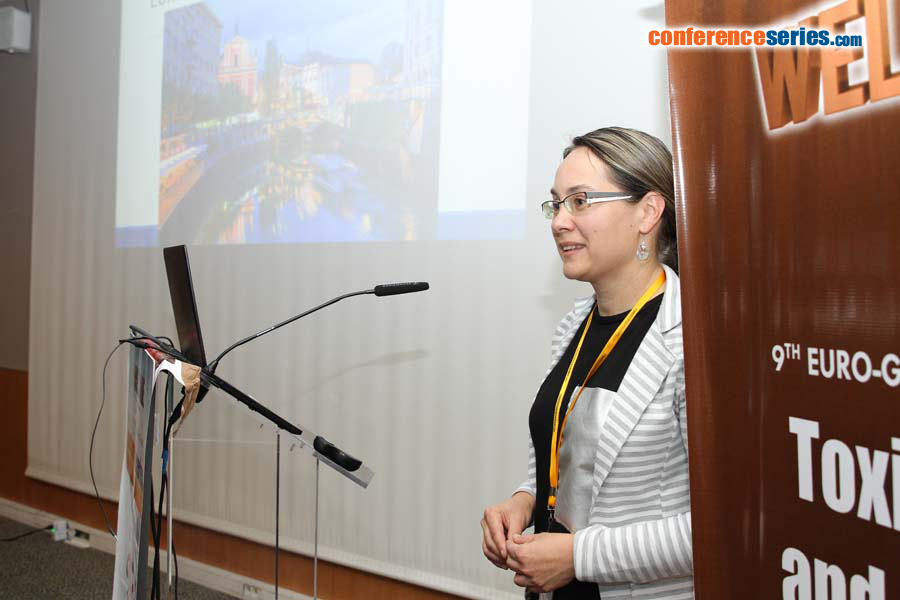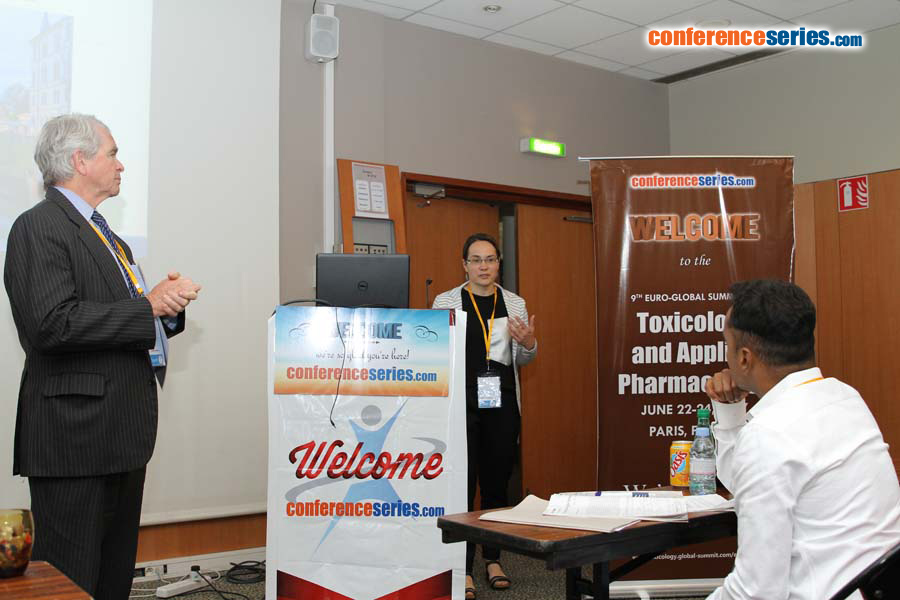
Lucija Peterlin MaÅ¡iÄ
University of Ljubljana, Slovenia
Title: Bisphenol A analogs and new brominated flame retardants: Do their metabolites have endocrine activity?
Biography
Biography: Lucija Peterlin MaÅ¡iÄ
Abstract
Statement of the Problem: Structural analogs of bisphenol A (BPF, BPAF, BPS) are commonly used as its alternatives in industrial and commercial applications. Nevertheless, the question arises whether the use of other bisphenols is justified as replacements for bisphenol A in mass production of plastic materials. Knowledge about the metabolic pathways and enzymes involved in metabolic bio-transformations is essential for understanding and predicting mechanisms of toxicity. The activities on different nuclear receptors of the new brominated flame retardants 2-ethylhexyl 2,3,4,5-tetrabromobenzoate (TBB) and bis(2-ethylhexyl) 2,3,4,5-tetrabromophthalate (TBPH), and their main carboxylic acid metabolites 2,3,4,5-tetrabromobenzoic acid (TBBA) and mono(2-ethylhexyl) tetrabromophthalate (TBMEPH) were also investigated.
Methodology & Theoretical Orientation: The bisphenols metabolism using pooled liver and intestine microsomes, as well as recombinant human cytochromes (CYP1A2, CYP2C8, CYP2C9, CYP2C19, CYP2E1, and CYP3A4) was tested using LC-MS/MS. For nuclear receptor testing in vitro systems were used to evaluate the estrogenic, androgenic, glucocorticoid, thyroid, PXR and PPARs activities of parent chemicals and their metabolites.
Conclusion & Significance: Once enter the body; the bisphenols are subjected to both oxidative metabolism and mainly conjugation. However, conjugation, which is mainly with glucuronic acid, is the predominant metabolic pathway for bisphenols and this is therefore considered to be an important mechanism for bisphenols detoxification. However, comprehensive testing of BPAF-glucuronide on all nuclear receptors has been performed and will be presented. On the other hand, it has been detected that metabolites of bisphenols and flame retardants have enhanced endocrine activities. For example, the estrogenic activities of MBP and hydroxycumyl alcohol are significantly higher than that of BPA. Even the formation of small amounts of those metabolites can significantly affect estrogenic activity. This was observed also for the novel brominated flame retardants TBB and TBPH, which showed weak or no activity on estrogen and androgen receptors, while their metabolites showed significant anti-estrogenic and anti-androgenic effects. Although conjugation is an extremely important detoxification pathway for bisphenols, it cannot completely eliminate their toxic effects in the body. Environmental estrogens can elicit their responses not only through binding to ERs, but also through numerous alternative pathways, and very low concentrations are needed for measurable effects. Despite their rapid glucuronidation, small amounts of bisphenols remain in their free form. As these can be further metabolized to their biologically active metabolites, these represent the risk for human health.
Recent Publications
1. Gramec D, Schmidt J, Fic A, KlopÄiÄ I, Trontelj J, Sollner Dolenc M, Finel M, Peterlin MašiÄ L (2016) Influence of metabolism on endocrine activities of bisphenol S. Chemosphere 157: 152-159.
2. KlopÄiÄ I, Gramec D, Peterlin MašiÄ L, Sollner Dolenc M (2016) Comparison of in vitro hormone activities of novel flame retardants TBB, TBPH and their metabolites TBBA and TBMEPH using reporter gene assays. Chemosphere 160: 244-251.
3. Gramec D, TomašiÄ T, Carino A, Distrutti E, Fiorucci S, Peterlin MašiÄ L (2016) New brominated flame retardants and their metabolites as activators of the pregnane X receptor. Toxicology Letters 259: 116-123.
4. Fic A, JurkoviÄ Mlakar S, Juvan P, Mlakar V, Marc J, Sollner Dolenc M, Broberk K, Peterlin MašiÄ L (2015) Genome-wide gene expression profiling of low-dose, long-term exposure of human osteosarcoma cells to bisphenol A and its analogs bisphenols AF and S. Toxicology In Vitro 29: 1060-1069.
5. Fic A, Žegura B, Gramec D, Peterlin MašiÄ, L (2014) Estrogenic and androgenic activities of TBBA and TBMEPH, metabolites of novel brominated flame retardants, and selected bisphenols, using the XenoScreen XL YES/YAS assay. Chemosphere 112: 362-369.





